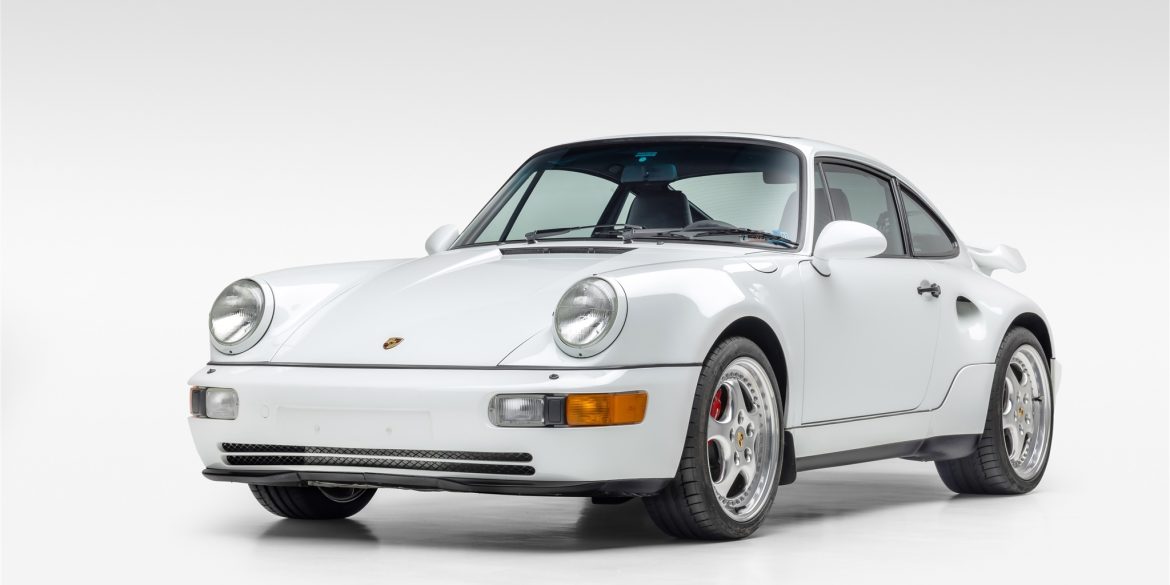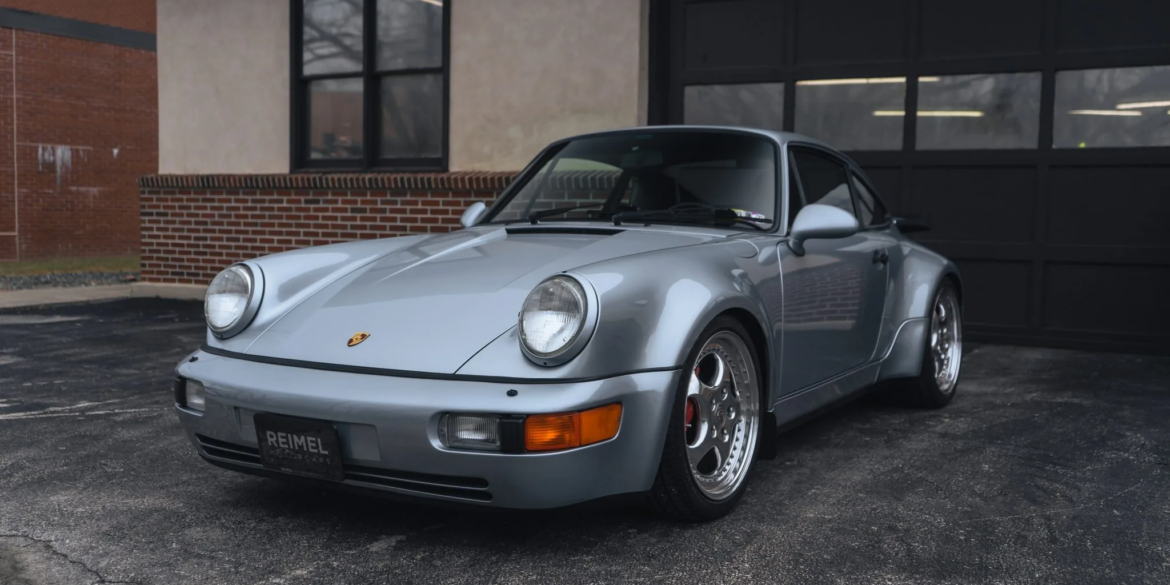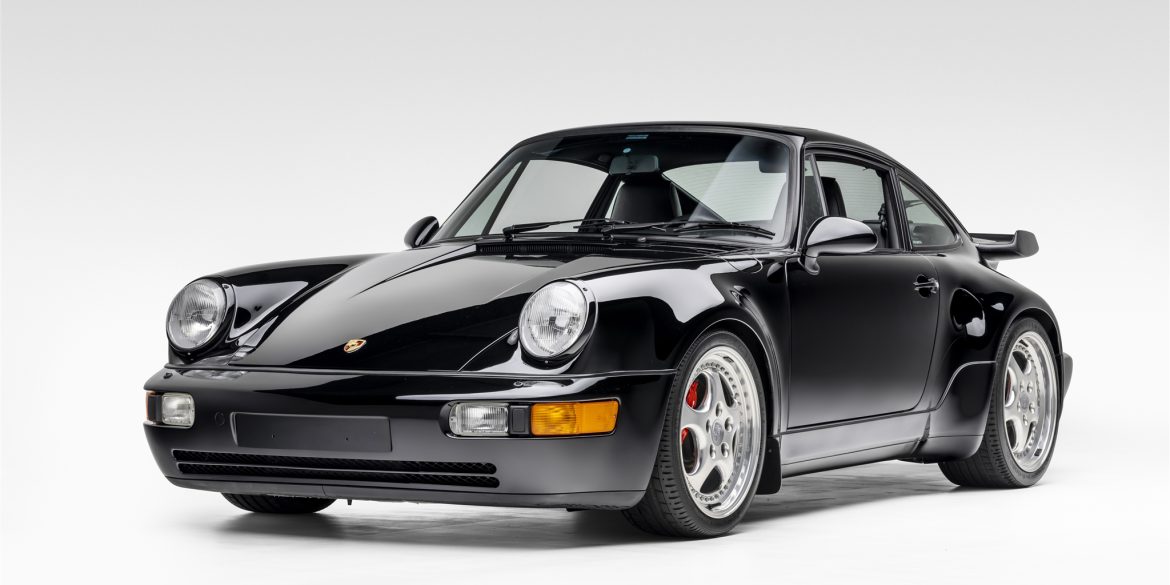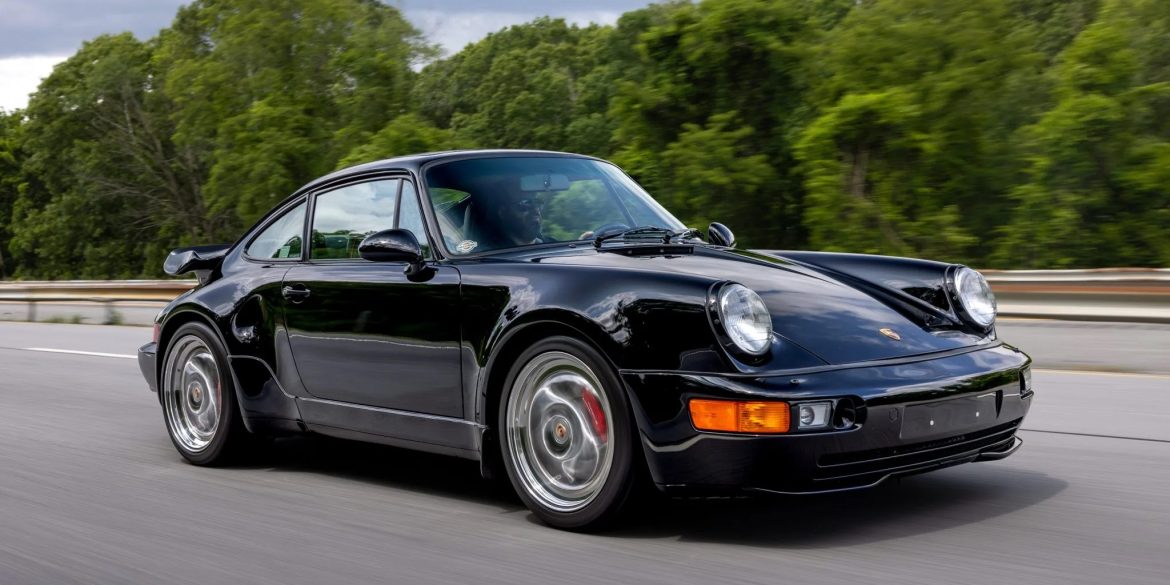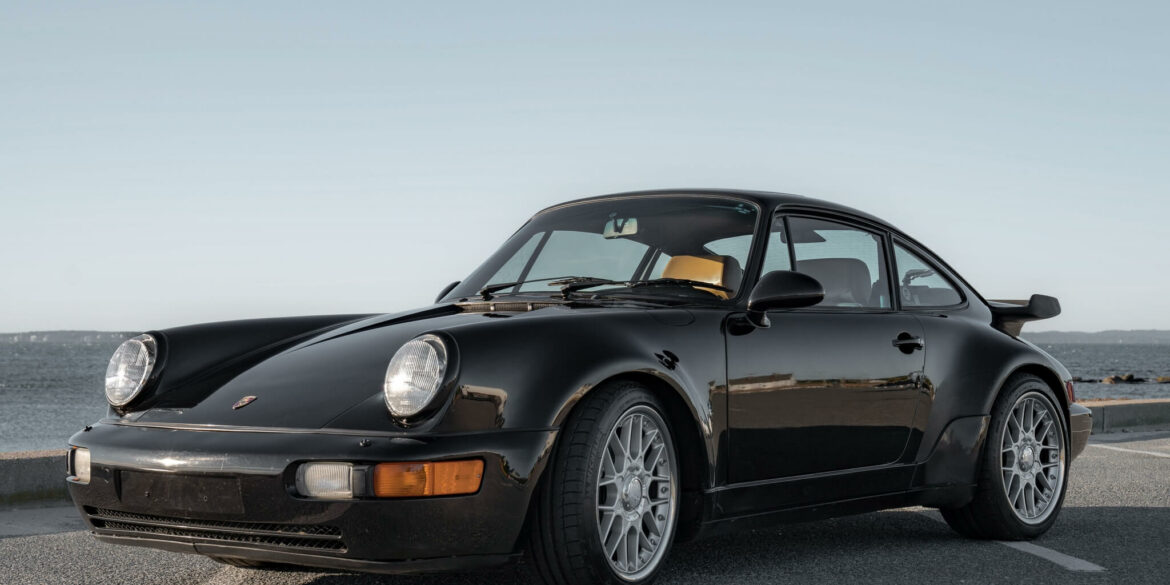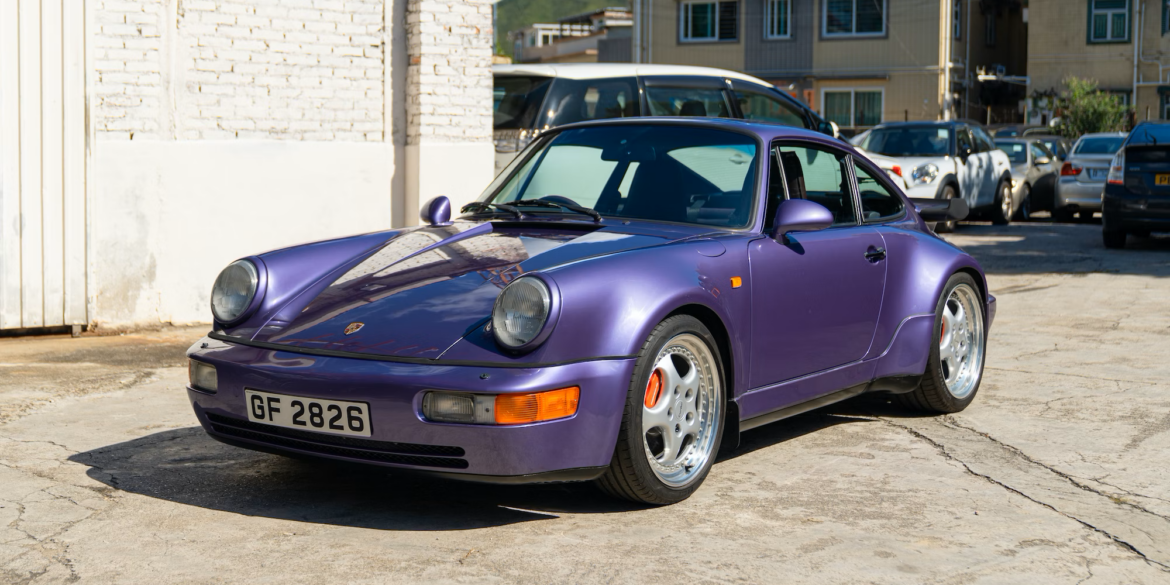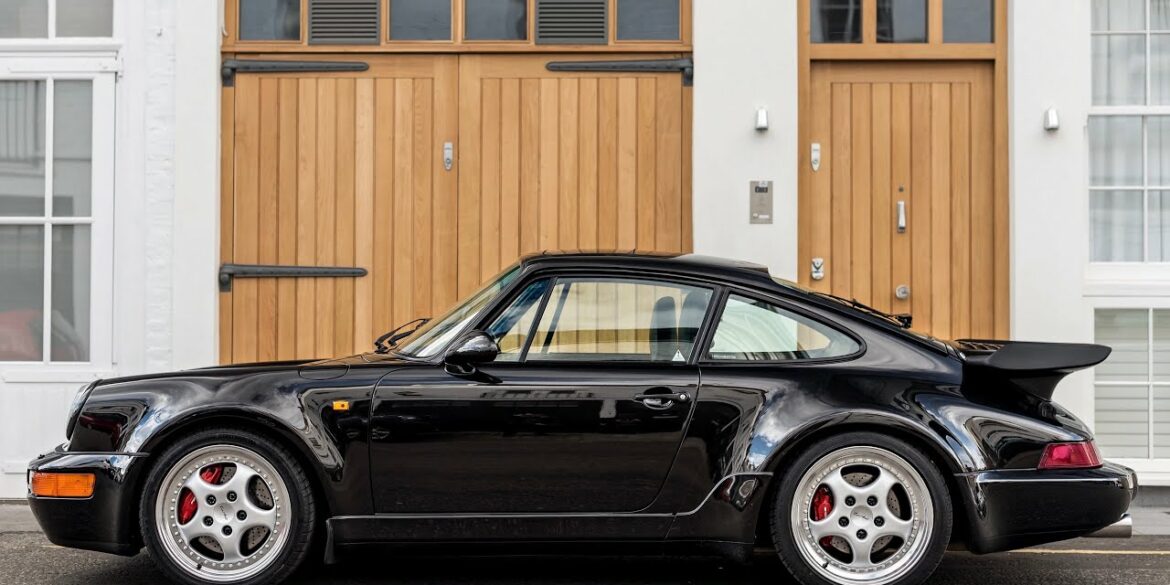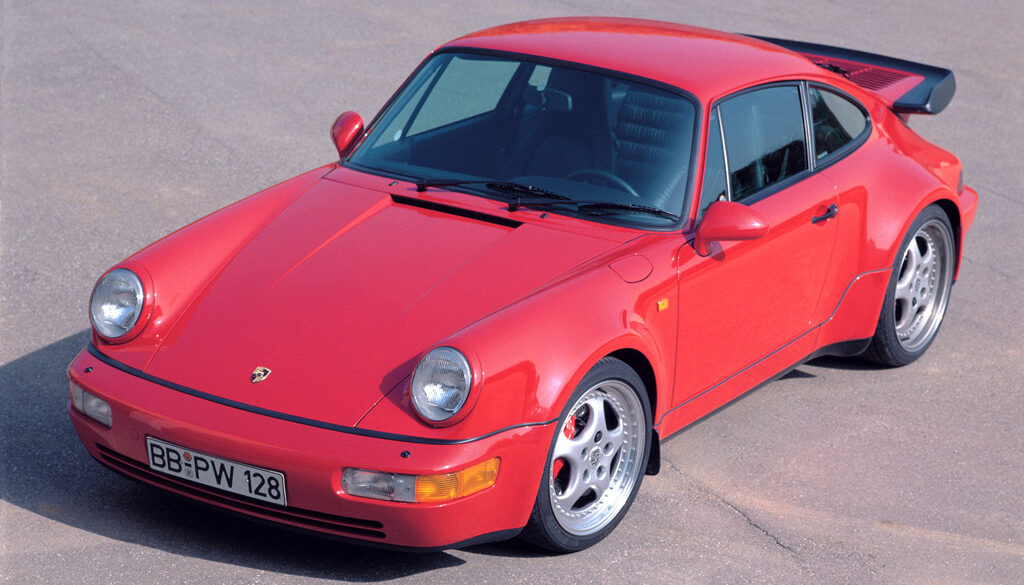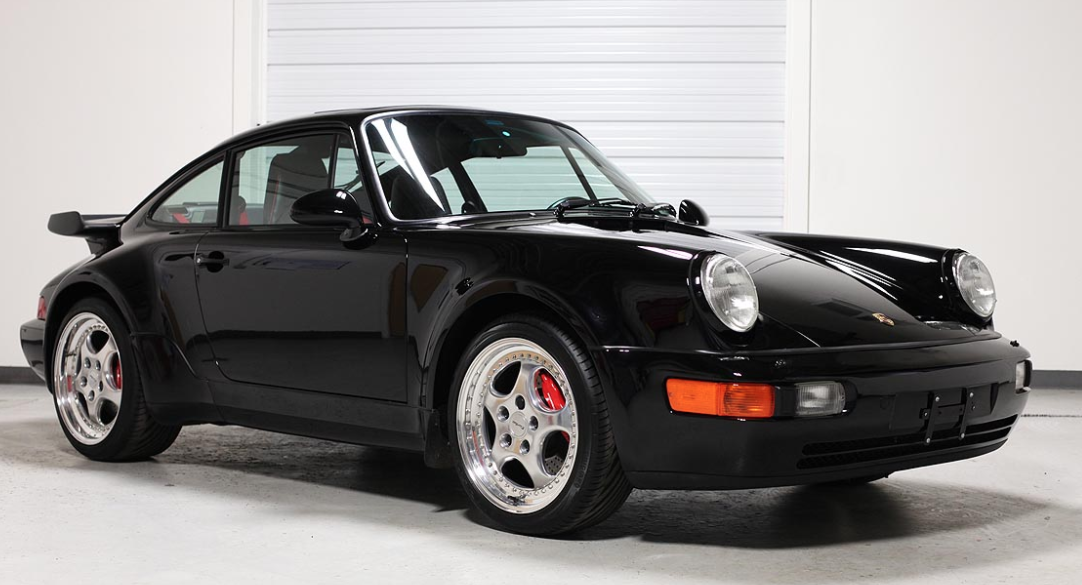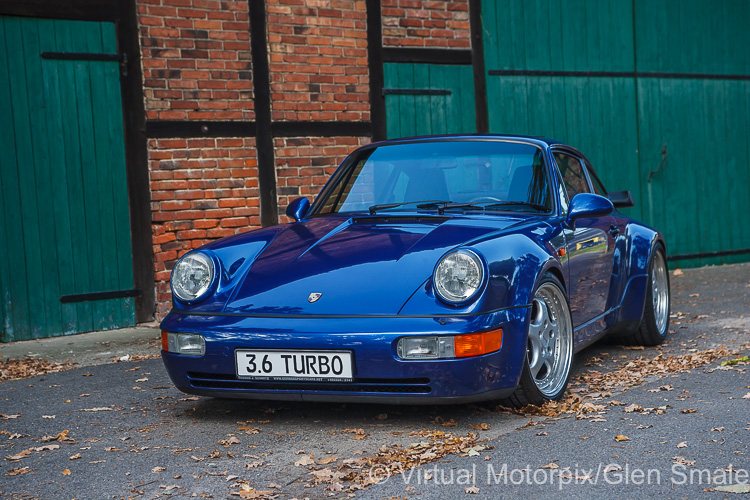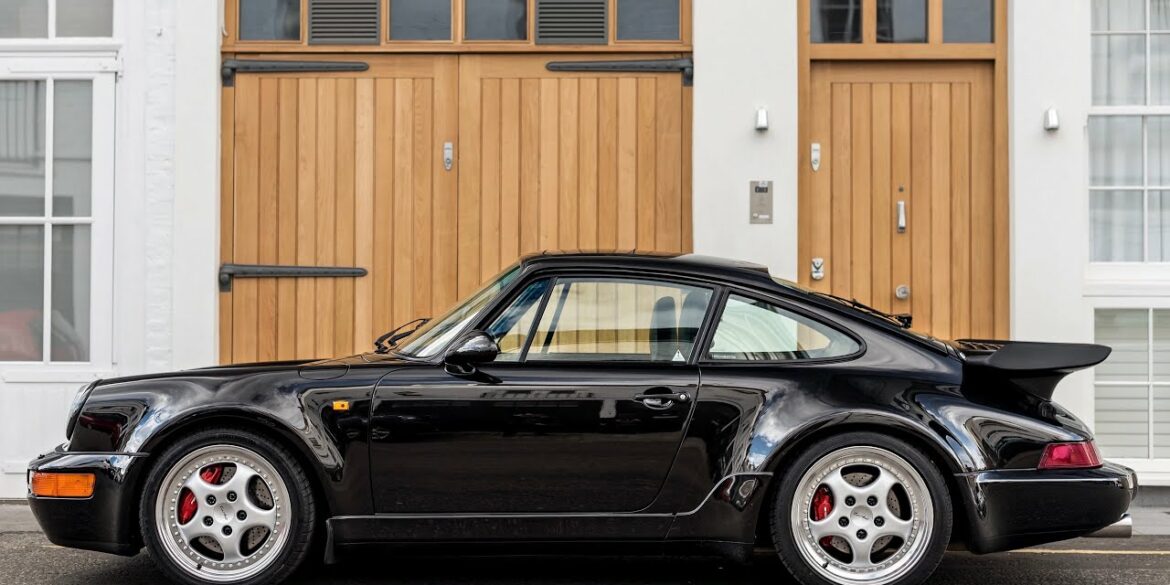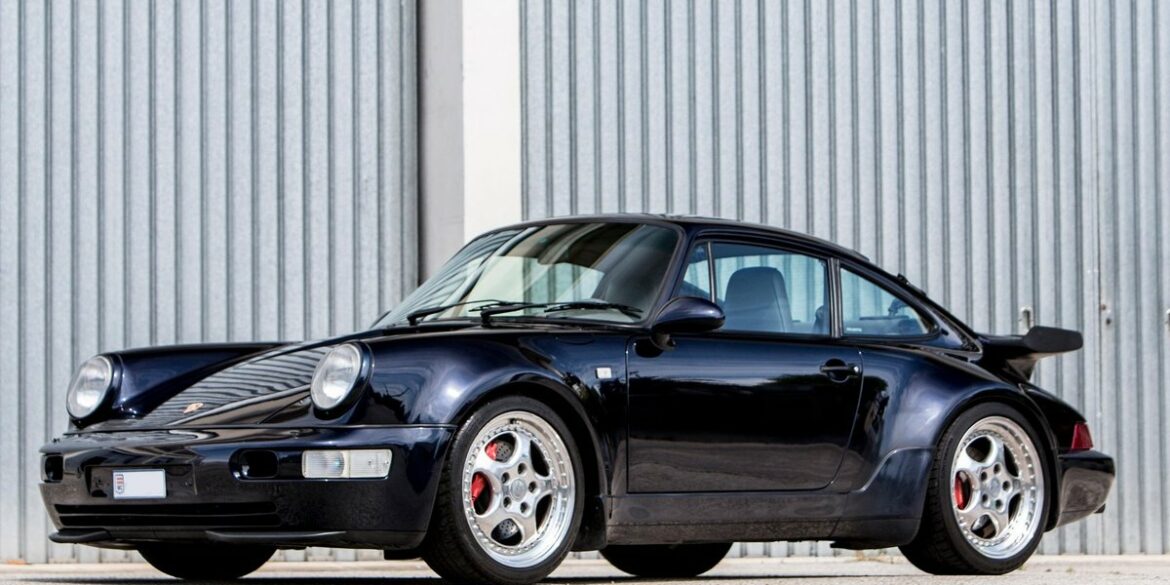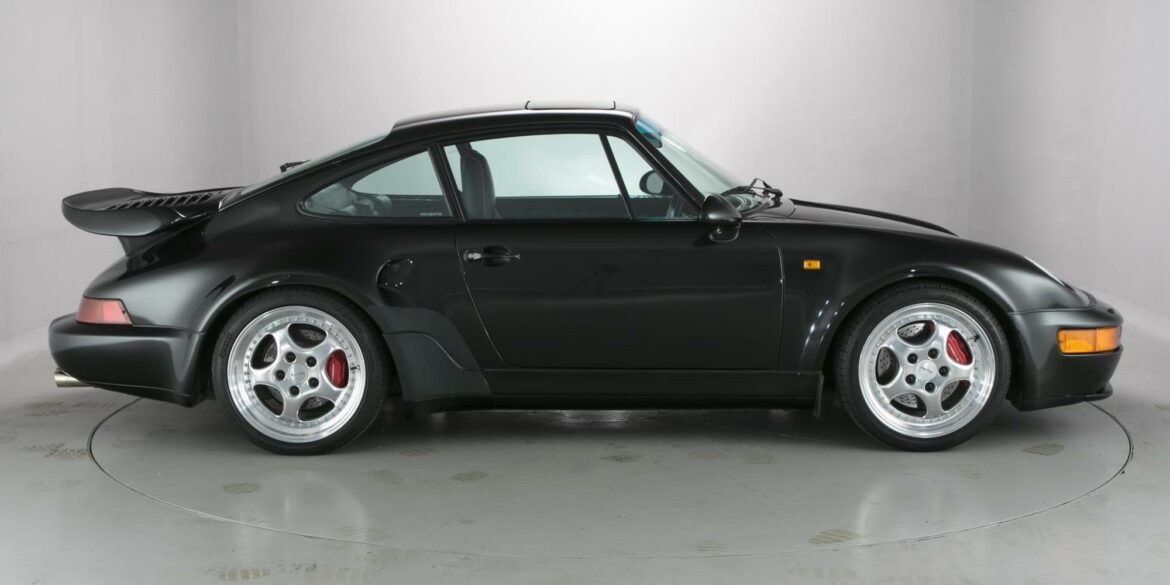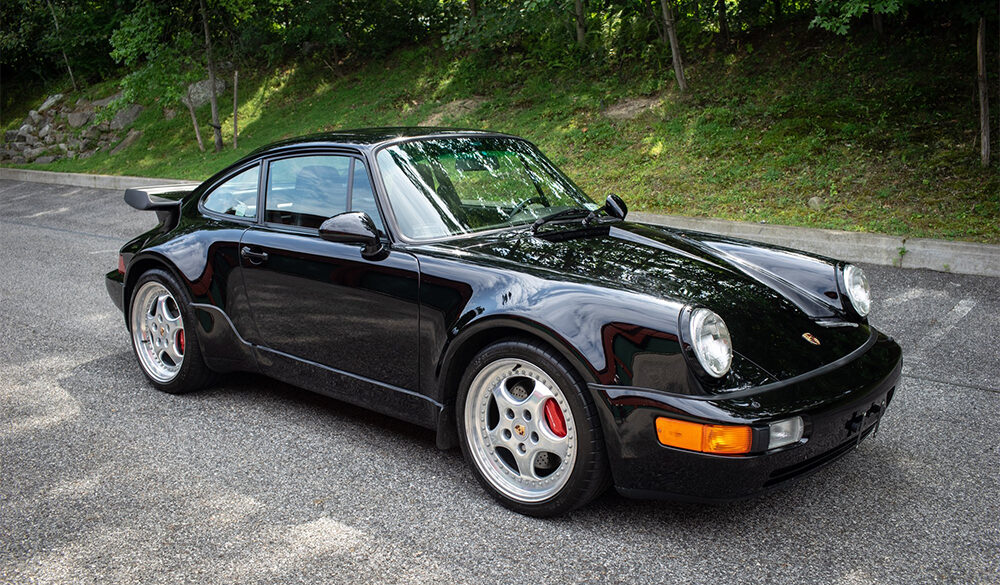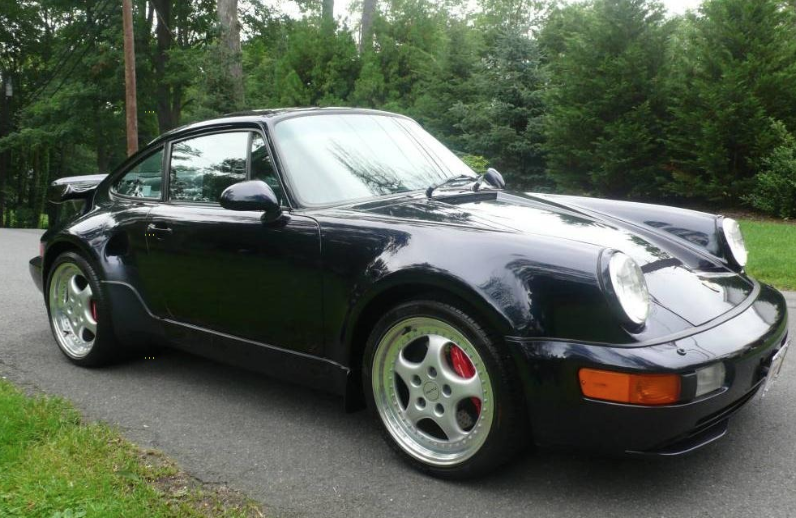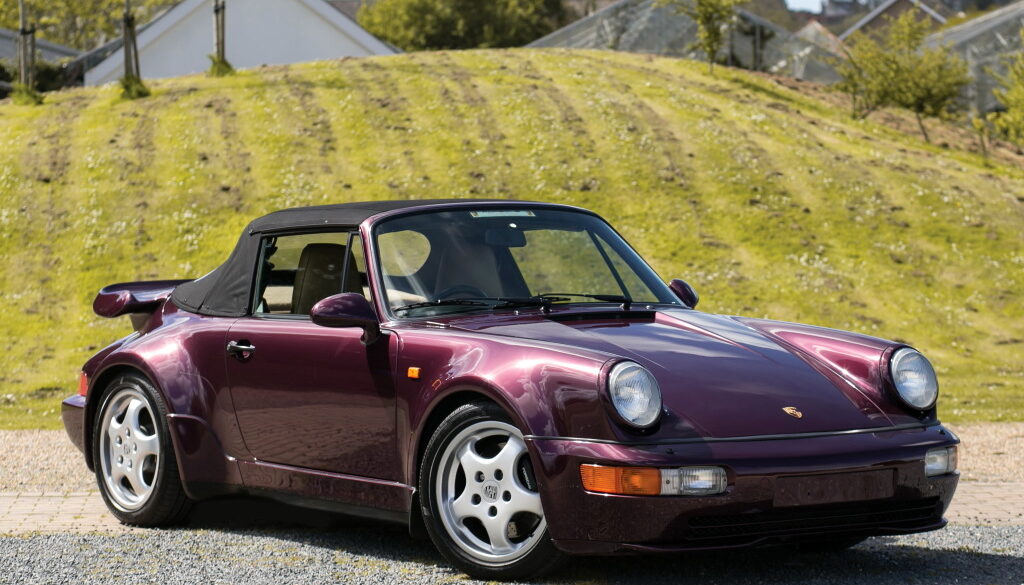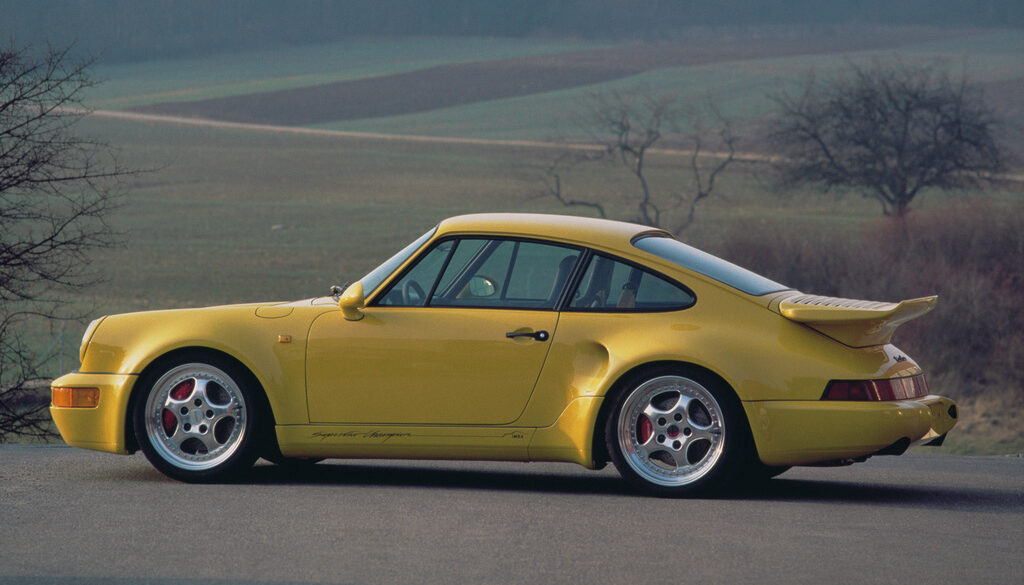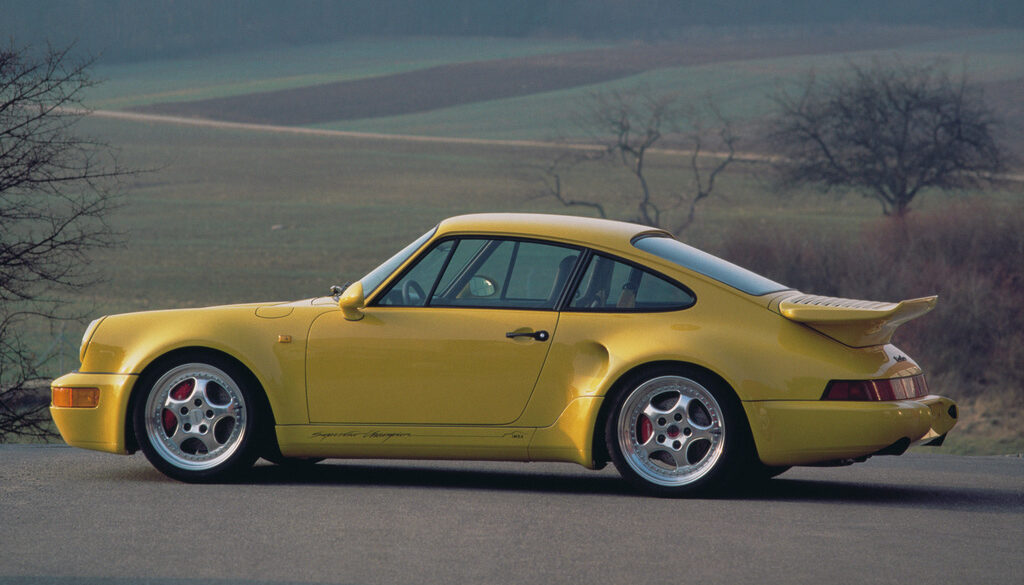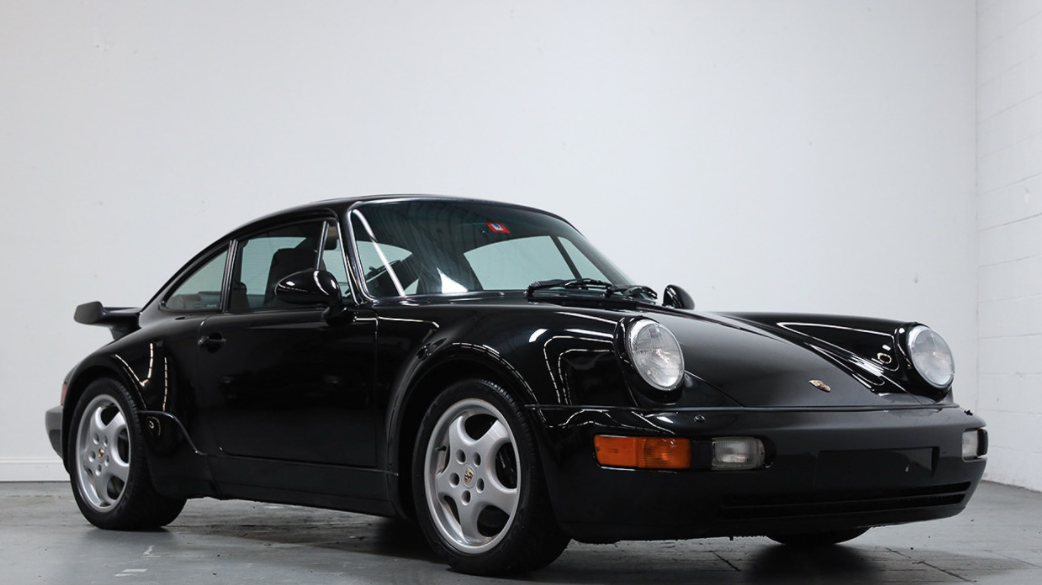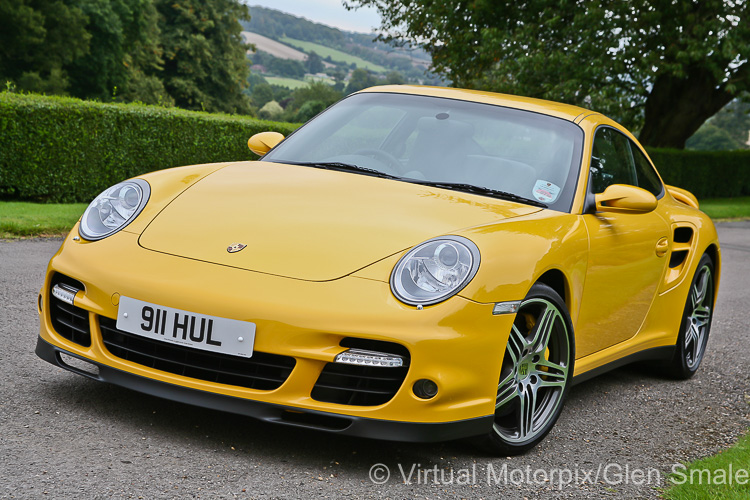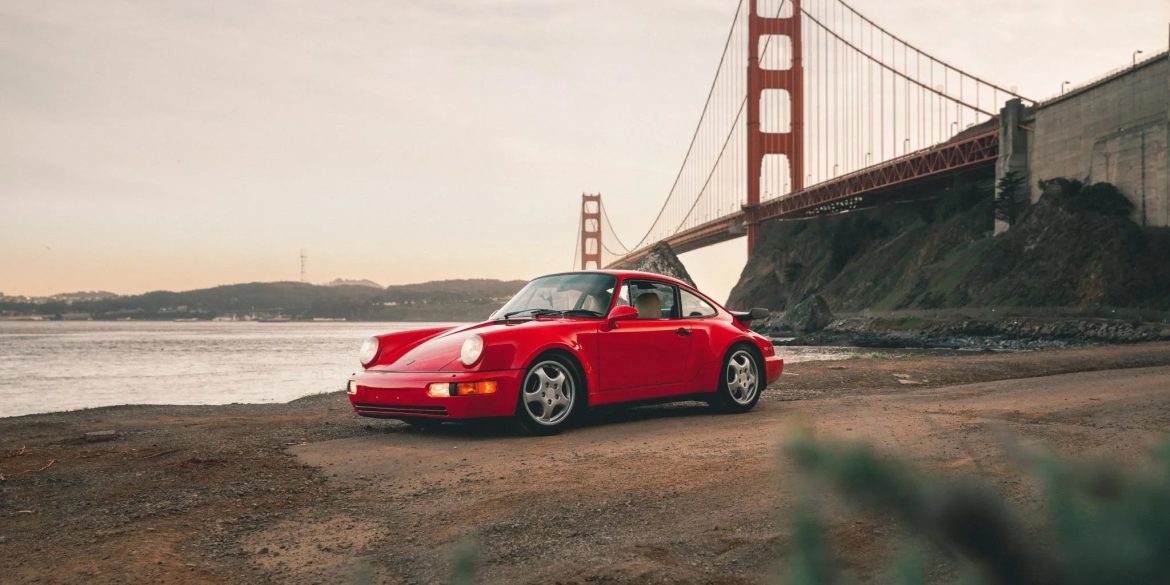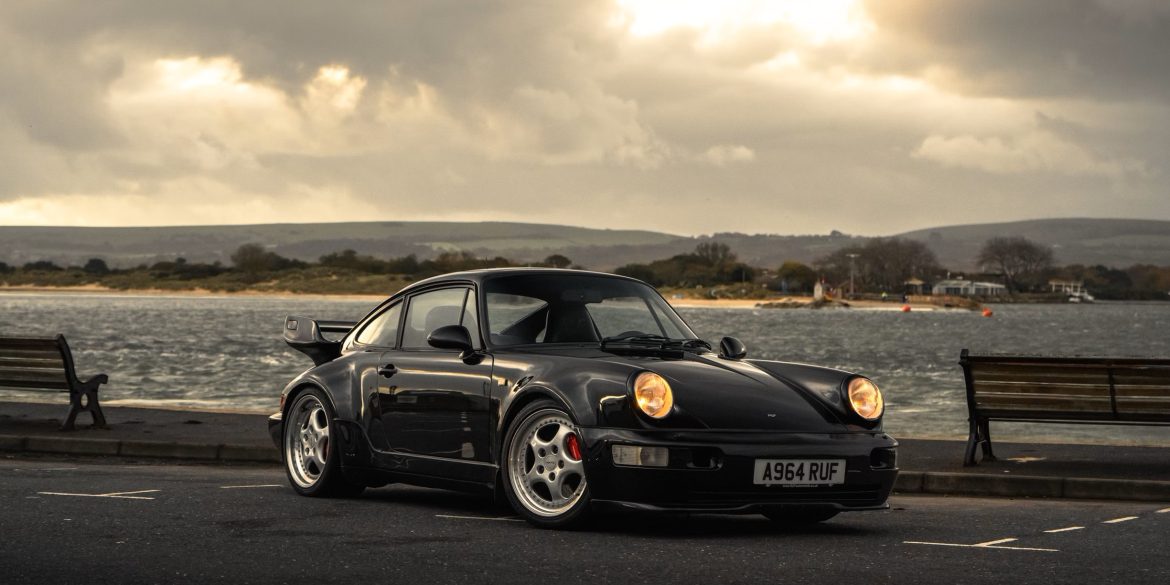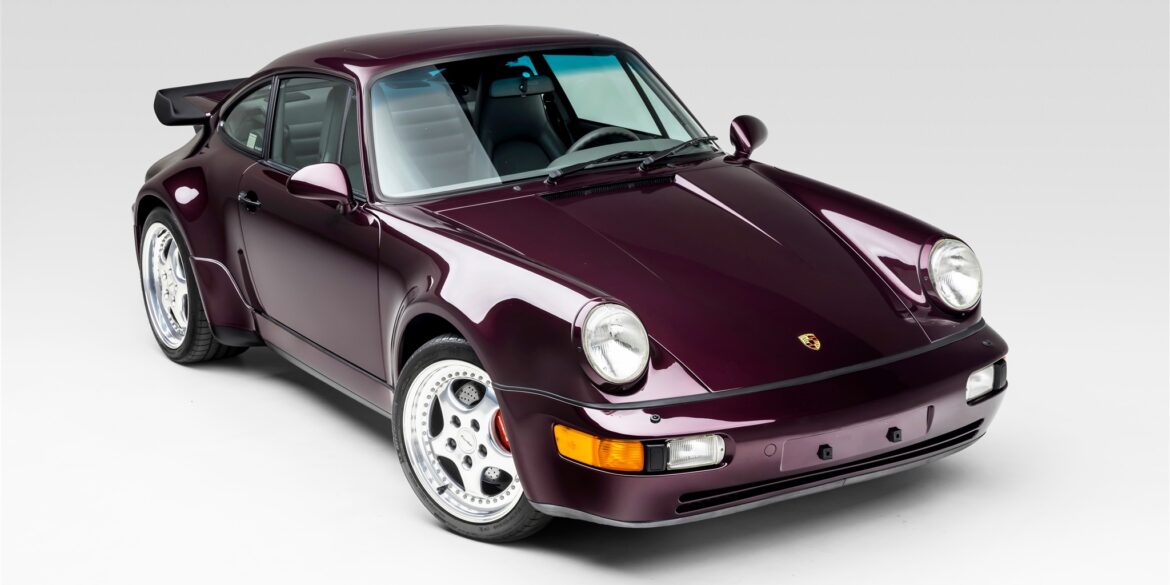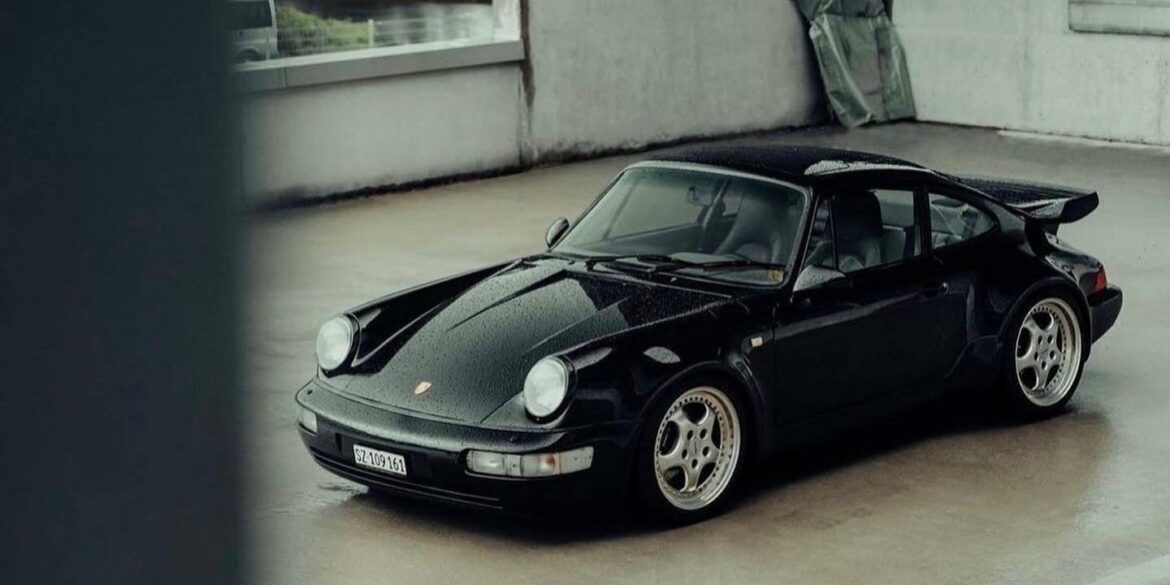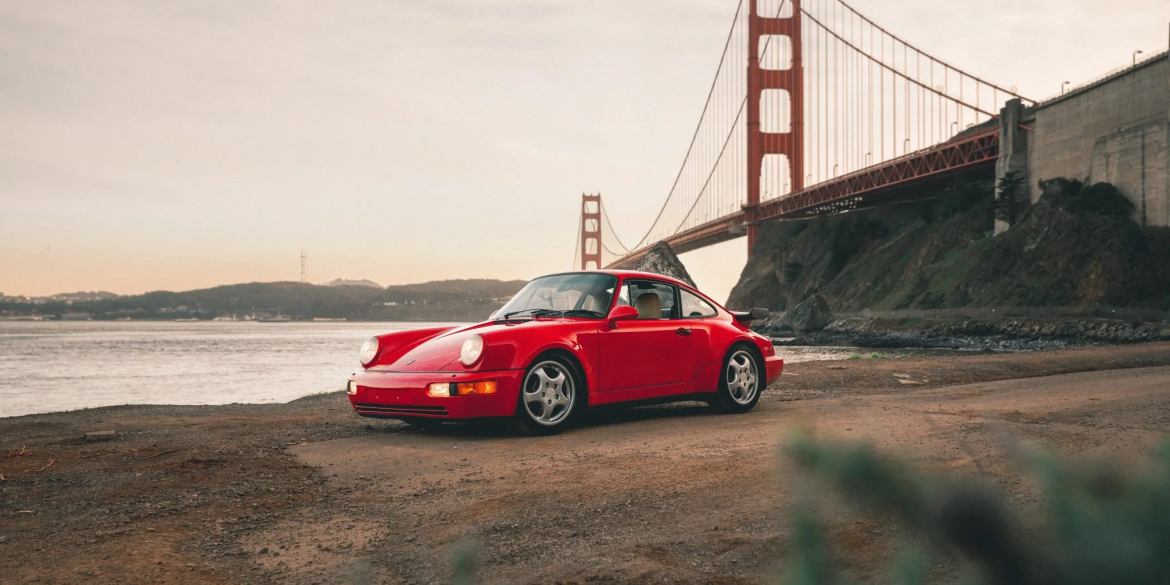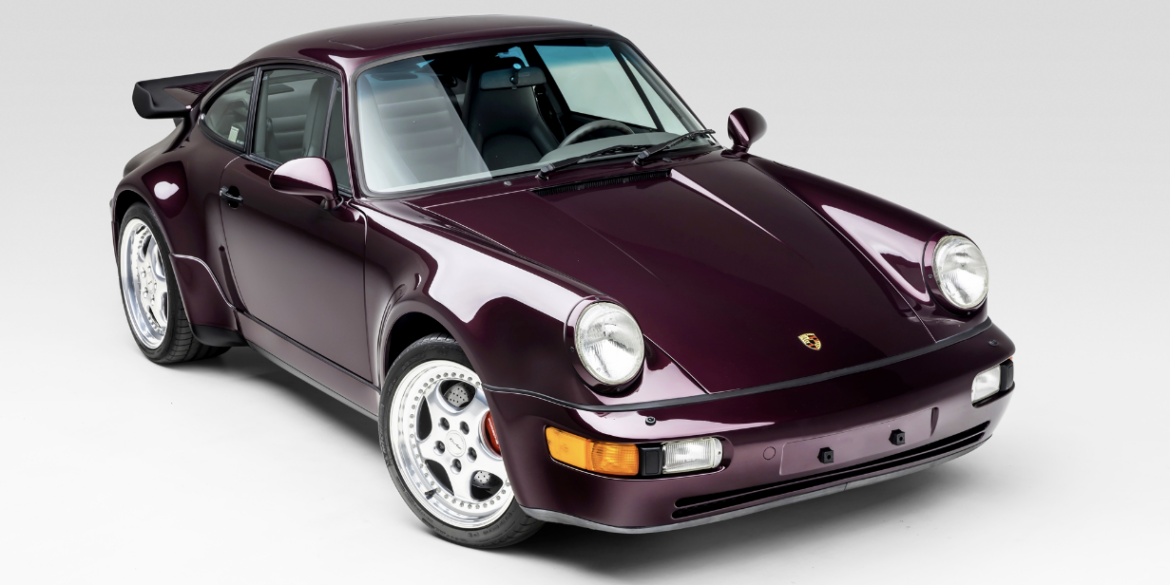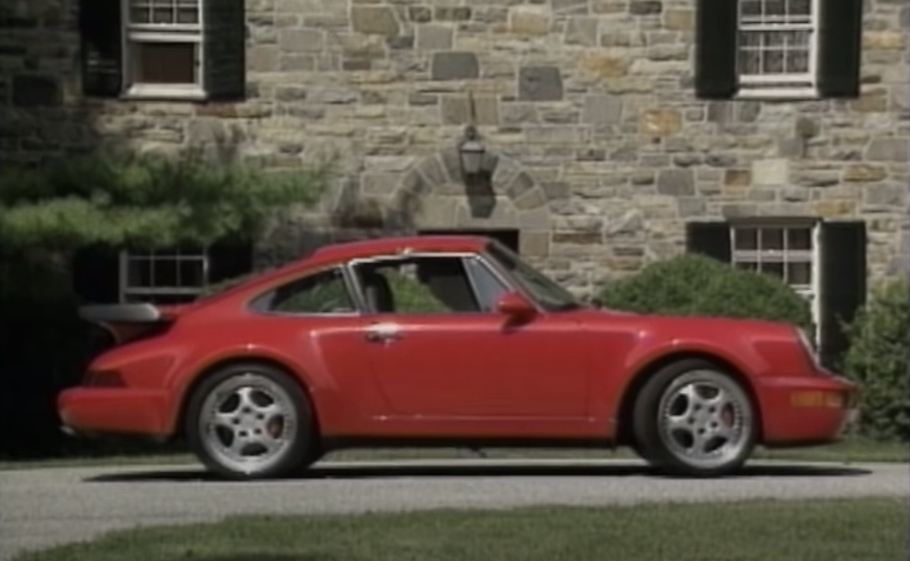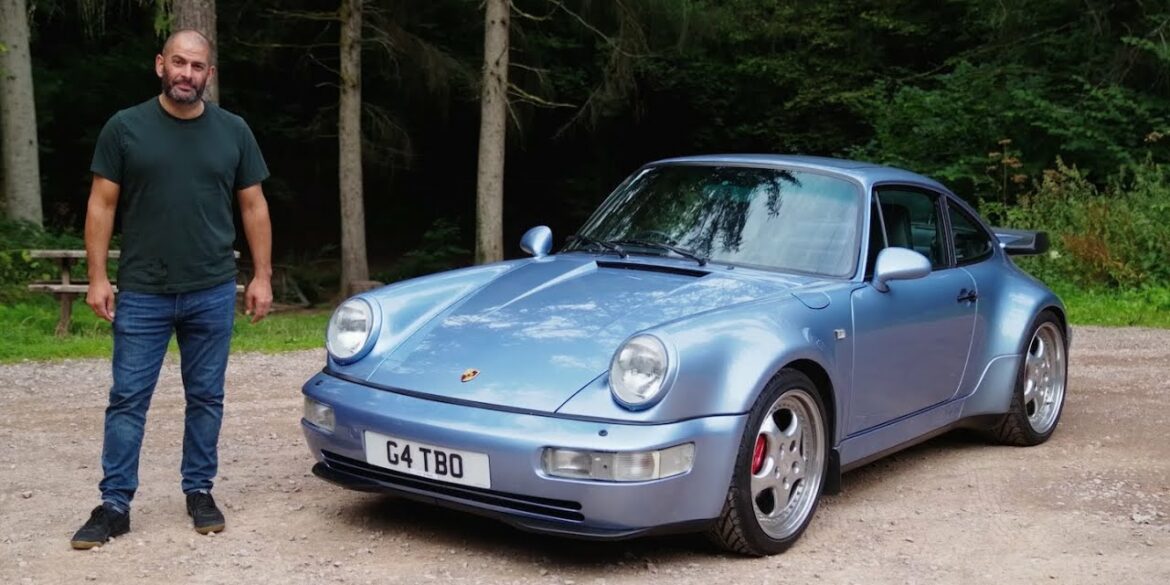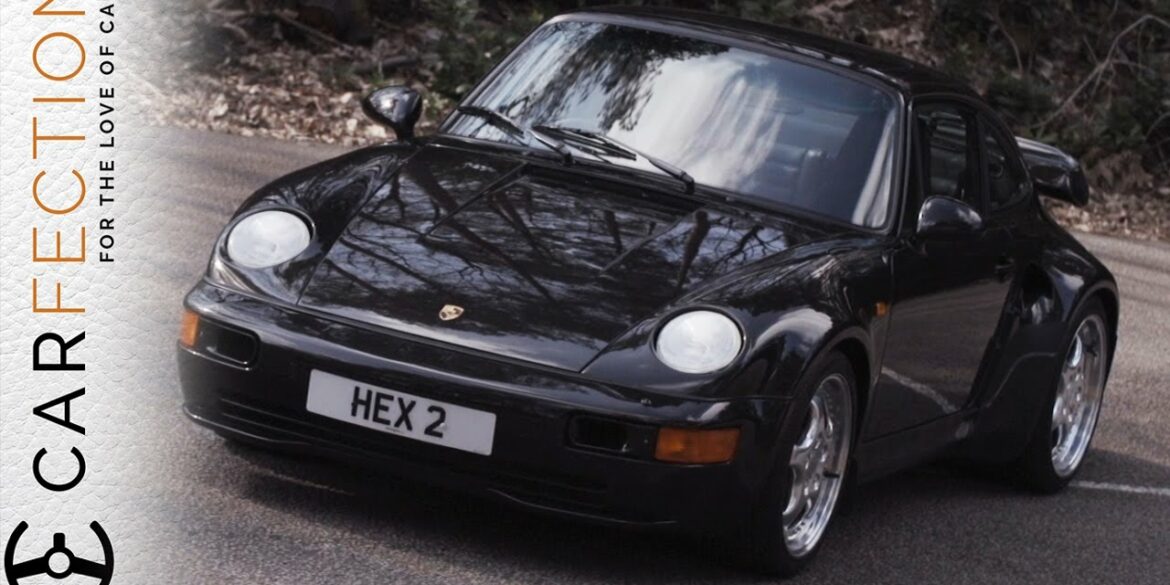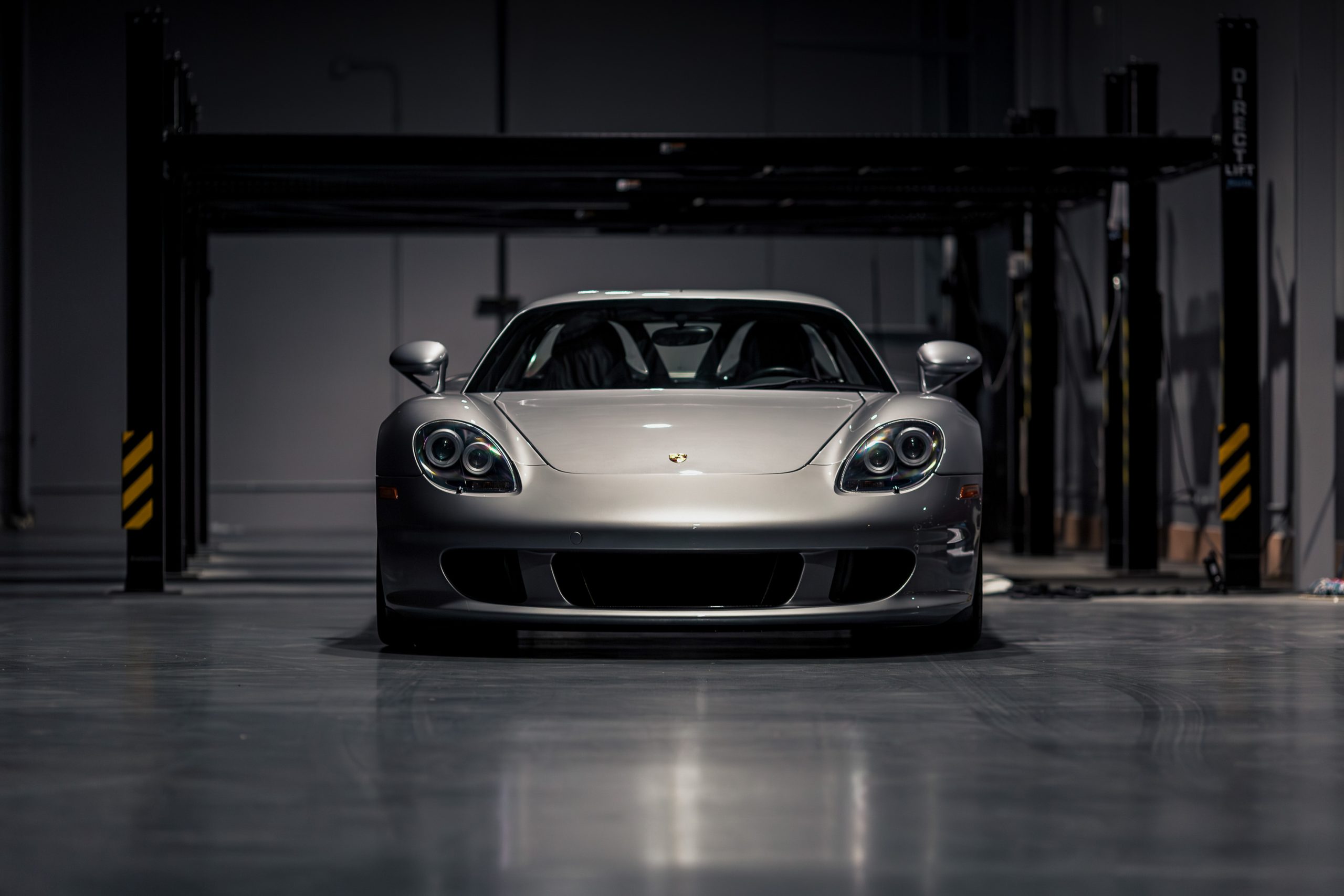The 964 generation has become highly popular, primarily due to its iconic styling and air-cooled design. Among the 964 models, the 1994 Porsche 911 Turbo S 3.6, recently listed for sale on Bring a Trailer, stands out as one of the rarer and more special examples. It is one of...
You can say that the 3.6-liter 964 generation Porsche 911 Turbo was indeed a special car and that still remains today. Aside from boasting superb performance, it’s aesthetically pleasing looks make it an extremely desirable piece of art that would certainly serve as a centerpiece of any car collection just...
In 1994, the standard Porsche Turbo 3.6 was the fastest production car available in the United States. The Turbo S option-code 36S further enhanced this formidable sports car. Notably, the Turbo S cars were equipped with the M64/50S high-performance engine, derived from the 1993 IMSA 3.6 engine built by ANDIAL...
This 1994 Porsche 911 Turbo S 3.6 Package is a stunning example of one of the 17 “Package” models produced with standard Turbo bodywork for the North American market. It is a gorgeous example despite showing over 41k miles on the odometer. Designed as an exclusive swan-song offering for the...
Live now on PCarMarket is one of the 674 U.S. market examples of the Porsche 964 Turbo produced in 1991. The car was acquired by its longtime owner from Massachusetts in 1993 and was then converted to BUR specifications courtesy of RUF in 1996. This example had it Turbo 3.6...
At the Geneva Motor Show in March 1992, the 3.3-litre 964 Turbo S was unveiled sporting air inlet vents in the rear fenders ahead of the wheels, a feature that would become a hallmark of all future 911 Turbos. Later that year, at the Paris Motor Show in the autumn,...
How to Identify Your Porsche 911 (964) Turbo 3.6 In addition to the Slantnose cars there was a 964 Turbo 3.6 “Package”-version made for USA, which incorporated many X-goodies from the price list of Porsche Exclusive. No wonder, the “Package” cars are sometimes referred to as 964 Turbo S 3.6...
The 1989/90 change of model year saw the launch of the Porsche 911, 964 series onto the market. This 911 model was initially available as a Coupe, Targa and Convertible. From model year 1991 onwards Porsche also introduced its top-of-the-line model - the Turbo - into this series. In spite of bearing a major similarity in terms of look to the naturally-aspirated model, the extended wings remained. This meant that the new Porsche could retain its turbo look. The 964 Turbo model was the successor to the Porsche 930. The 964 Turbo was the end of an era, the last of the single turbo rear-wheel drive 911 Turbos.
No Subscription? You’re missing out Get immediate ad-free access to all our premium content. Get Started Already a Member? Sign in to your account here....
No Subscription? You’re missing out Get immediate ad-free access to all our premium content. Get Started Already a Member? Sign in to your account here....
Engine based on modified 3.6 litre 964 unit. Speedline wheels with big red brake calipers. Lessons learned in the Carrera Cup series proved the reliability of the new 3.6-litre engine. An additional three millimetres on the bore and two millimetres on the stroke, resulted in an increase in capacity of 300 cc. Combined with the turbo optimised cylinders, pistons and crank train, and an increase in the compression ratio from 7.0 to 7.5:1, this helped to boost power to 360 bhp. Torque was increased significantly to 520 Nm at 4200 rpm, up from 450 Nm at 4500 rpm in the earlier car.
No Subscription? You’re missing out Get immediate ad-free access to all our premium content. Get Started Already a Member? Sign in to your account here....
No Subscription? You’re missing out Get immediate ad-free access to all our premium content. Get Started Already a Member? Sign in to your account here....
The Porsche factory had 93 Turbo chassis left. These were all transferred to Porsche Exclusiv and hand built as the very special 964 Turbo 3.6 S. They were offered with normal, or ‘Flachbau’ slant nose front ends. While the vast majority of Turbo S’ were fitted with the ‘Flachbau’ nose as a no-cost option, the Turbo S could also be had with the traditional 964 nose as well. In all, 76 Flatnose cars were made while 17 non-Flatnose (known as Package option) cars were made. These cars were also fitted with the X88 option, which increased power to 380 hp. 75 flatnose units were produced.
No Subscription? You’re missing out Get immediate ad-free access to all our premium content. Get Started Already a Member? Sign in to your account here....
19 non 'slant nose' or Package cars were made for the USA only. Very rare. The Porsche factory had 93 Turbo chassis left. These were all transferred to Porsche Exclusiv and hand built as the very special 964 Turbo 3.6 S. They were offered with normal, or ‘Flachbau’ slant nose front ends. While the vast majority of Turbo S’ were fitted with the ‘Flachbau’ nose as a no-cost option, the Turbo S could also be had with the traditional 964 nose as well. In all, 76 Flatnose cars were made while 17 non-Flatnose (known as Package option) cars were made. These cars were also fitted with the X88 option, which increased power to 380 hp.
The Turbo-look Porsche 964 has always been a very desirable automobile, among them 1,532 Carrera 2 Cabriolets constructed worldwide. Within that group, there were some cars that were even more specialized. The Register says six Turbo-look cabriolets were pulled off the production line in Zuffenhausen and transported to the Porsche Exclusive shop in Weissach. Three of these six powerful and luxuriously equipped drop-tops were equipped with left-hand drive for buyers in Germany (Code C00), and the other three were fitted with right-hand drive
No Subscription? You’re missing out Get immediate ad-free access to all our premium content. Get Started Already a Member? Sign in to your account here....
Porsche made a lightweight version of the Turbo simply known as the Tuubo S. This used the spartan appointments of the Carrera RS with an upgraded version of the Turbo engine. Some cars received graphics on the side celebrating IMSA Supercar Championship. Similar to the Carrera RS, the Turbo S had no power steering, air conditioning, airbags, central locking, alarm system, rear window wiper, smaller window washer reservoir, smaller horn, and had thin-gauge glass. The engine used a second oil cooler and slightly higher boost to improve overall performance.
A forgotten part of the 964s history is the Turbo S2. It was built to adhere to homologation rules so Porsche could participate in IMSA's sports car racing series. IMSA's homologation rules meant that Porsche had to build at least 200 road-going versions of the participating car, 20 of which needed to share most of the primary components of the race car. The 911 Turbo S2 was built specifically for this purpose and exclusively for the United States and Canada. The 20 homologation specials left the factory as stock 964 Turbos, heading immediately to California-based tuner for "S2" engine upgrades.
1974 Porsche 911 Turbo #1 chassis no. 911 560 0042. First owned by the late Louise Piëch (older sister of Ferry Porsche), the 2.7-litre 911 Turbo prototype is now on display in the Porsche Museum Inspiration for this feature came from the post published by Porsche in December 2020. It...
The Turbo S2 is a homologation special that Porsche commissioned to comply with IMSA requirements for participating in the Bridgestone Supercar Championship series. Since the standard Porsche 964 Turbo S was not approved for sale in the US, unmodified 964 Turbos were imported and later converted to S2 specification by...
In 1993, the 964 Turbo introduced an entirely new engine configuration to critical acclaim. The engine’s displacement was increased to 3.6 liters, featuring higher compression and, most significantly, increased boost. This enhanced turbocharged M64 engine delivered a remarkable 360 horsepower and a staggering 385 pound-feet of torque, making it a...
In 1993, Porsche introduced the 911 Turbo 3.6, featuring an enhanced 3.6-liter single-turbo flat-six engine as a replacement for the previous 3.3-liter turbo engine. With its 355 horsepower, it became the highest-performing Porsche available in North America, and the production was limited to fewer than 1,500 units. Later in the...
This 1994 Porsche 911 belongs to a limited production run of around 1,500 Turbo 3.6 models manufactured during the 1993 and 1994 model years. Compared to the standard 911, the 964 Turbo model boasts a wider body, aerodynamic side mirrors, and a fixed rear spoiler. This specific model comes in...
The 1989/90 change of model year saw the launch of the Porsche 911, 964 series onto the market. This 911 model was initially available as a Coupe, Targa and Convertible. From model year 1991 onwards Porsche also introduced its top-of-the-line model – the Turbo – into this series. In spite...
Bid now to get the chance to acquire one of the rarest 964s ever built, a 1992 Porsche 911 Turbo S2 currently offered for sale-via-auction with no reserve on Bring A Trailer. In 1991, the International Motor Sports Association (IMSA) introduced the Bridgestone Supercar Championship as a support race during...
An Eye-Catching Amethyst Metallic 964 Porsche 911 Turbo Fetches Big Money At Auction How about $401,000 for a 1994 Porsche 911 Turbo 3.6. Not bad and clearly the Porsche market is still strong for rare and high quality cars. This 1994 Porsche 911 is one of approximately 1,500 Turbo 3.6 models...
Retro Review of the 964 Turbo 3.6 Amazing performance numbers even for today. Equally amazing value retention....
Jenson Button’s Porsche 964 Turbo 3.6 For Sale The Porsche 911 Turbo 3.6 is a rare modern classic supercar, and even more special among those are cars fitted with the hallowed ‘X88’ power package. You can therefore imagine the buzz among our team in bringing to market not only one...
Ultra Rare, Ultra Cool Have you ever seen a 911 Flatnose before? Neither had we. Here’s the story of one of the most elusive Porsches ever made....
964 911 Turbo Review Tiff is my favorite presenter.. You looks like a silly unassuming British man, then he gets behind the wheel and tears it up!!...


